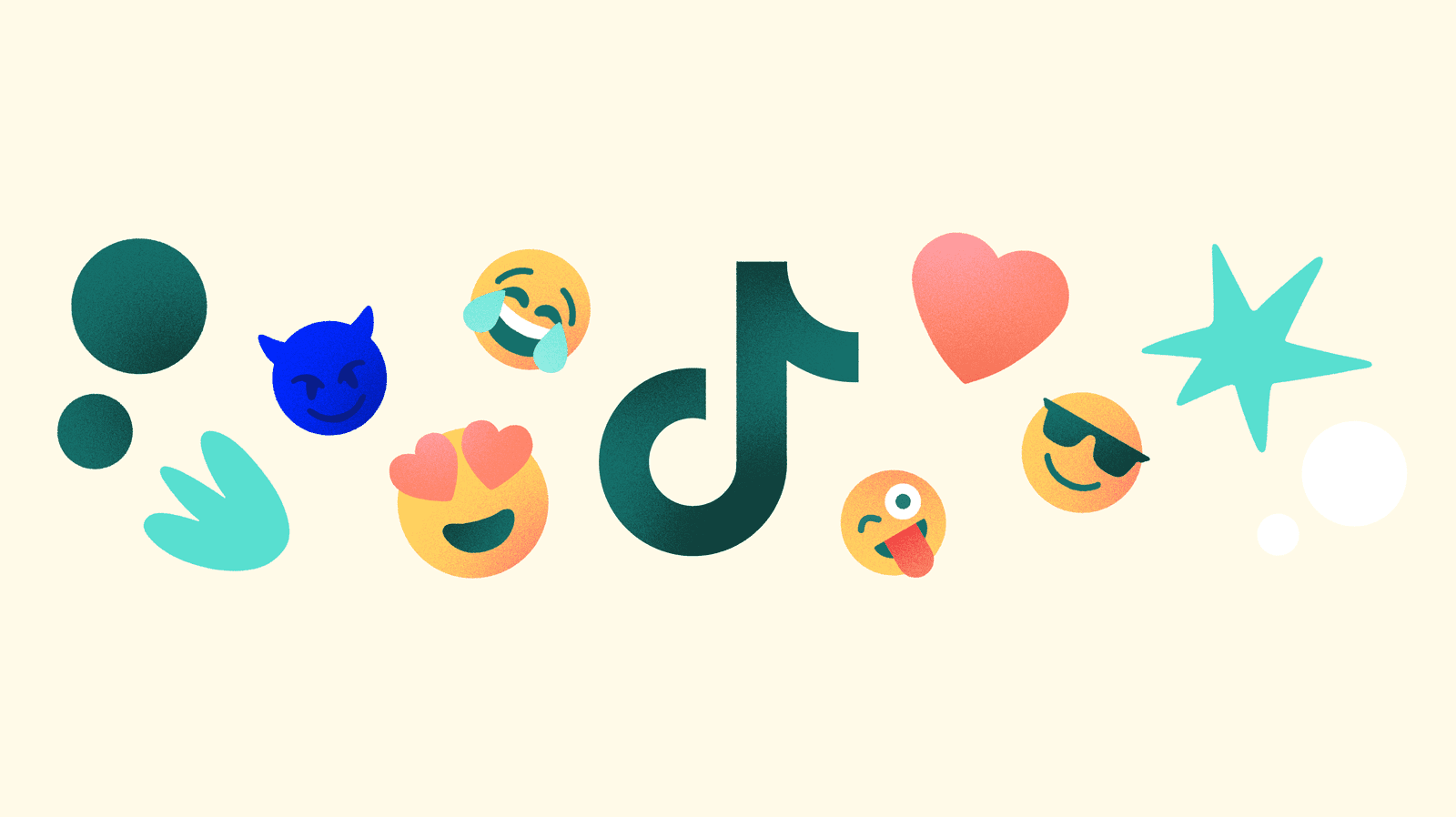
Table of Contents
- What is TikTok?
- What is TikTok’s audience like?
- Selling and promoting products on TikTok
- Types of ads on TikTok
- Partner with TikTok influencers
What is TikTok?
For most, it needs no presentation. But, if it still sounds new to you, TikTok is a social network based on sharing short videos of up to 60 seconds in length.
After the disappearance of Vine in 2020, TikTok has taken over as the most popular humor video platform in the world, and it also uses features made popular by Snapchat and Instagram, like filters and communities revolving around hashtags and influencers. The fact that it is a Chinese social network has made TikTok appear in the headlines due to political tensions, but here we are only going to analyze its potential as a marketing tool for brands and companies.
While it is not easy or cheap to advertise on TikTok, the network is starting to become very important almost everywhere in the world and it is now the most downloaded social media app globally. It is available in more than 155 countries and 75 languages and it currently reaches 800 million active users per month. In addition, it is a platform that is used intensively by users; on average, they spend 52 minutes each day on the app, with an open rate of 8 times per day.
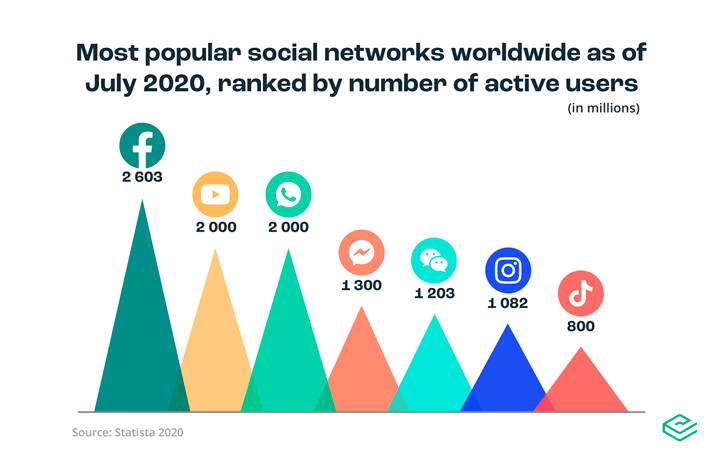
The most popular videos on TikTok are humoristic in nature, although also noteworthy is its use for sociopolitical criticism. Among the most typical formats, we can find homemade videos, memes, lip syncs, reactions, duets, choreography challenges, tutorials, and vlogs with advice.
→ Another revolution for brands: Facebook and Instagram Shops are here
What is TikTok’s audience like?
TikTok has become the social network of Generation Z, and the usage statistics really reveal that the majority of its users are between 10 and 19 years old, followed by people between 20 and 29 and those between 30 and 39 years of age.
Nevertheless, the platform can also be useful for brands aimed at other demographic groups that are older, depending on the product niche.
Selling and promoting products on TikTok
There are three ways to create a brand presence and promote products on TikTok:
- Create your own channel where the brand shares its videos
- Pay for ads on the platform
- Partner with influencers for sponsored content on their profiles
There are two main problems with TikTok for brands. The first is that its main audience, Generation Z, is not very fond of advertisements and rejects sponsored content and company profiles. The other obstacle is that ads are much more expensive than on other social networks like Facebook.
Currently, the CPM (cost per thousand impressions) on TikTok is around 10 dollars, and the minimum investments in an ad campaign can be very high for most brands, as we will see below.
If you decide to create your own brand profile, the process is free and simple, although not all users have the option to add a URL for their own website in their profile. To share your own content, the best idea is to go for livestreams and videos that contribute with content and tips that are really useful for the potential audience – not just showing products without any added value.
→ Start rehearsing: Why is livestreaming a trend in ecommerce?
Steps to create an advertiser account on TikTok
The first thing you have to do is to create an account through TikTok Ads. You’ll have to provide your basic information and wait for a representative from TikTok to contact you to confirm your account.
Once it’s up and running, you’ll be able to create campaigns and set the following elements:
- Aim: If it is to generate traffic to a certain link, get conversions, or invite users to install an app – and optimize your group of ads by conversion, click, or impression.
- Group: To segment ads by user location, year, gender, language, interests, and device.
- Length: The number of days the campaign will last.
- Payment data: Set your daily spend limit and your total spend limit (for both, there is a minimum of 500 dollars), and the pace at which you want your budget to be spent: standard or accelerated.
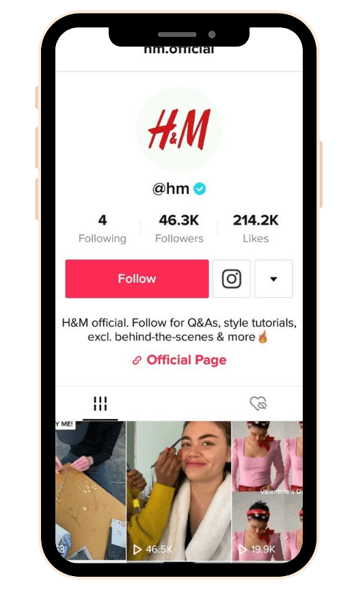
To create the ads, it will be necessary to include the links that you want to appear in the ads, in addition to text, images, categories, and up to 20 keywords to identify your website or app.
TikTok advertisements can be images, GIFs, or videos in a horizontal, vertical, or square format – although as most users visit the site with their cellphone, vertical videos are usually the best option. You can prepare them by using the Video Creation Kit by TikTok, which includes templates and music.
Always try to make them high-resolution videos with little text. If you prefer to leave things in the hands of an algorithm, the Automated Creative Optimization tool will create automated combinations of ads from a maximum of 10 images, 5 videos, 5 texts, and 1 CTA.
→ Time to choose! What social networks are best for your company?
Types of ads on TikTok
In-feed native video
In-feed native video ads are native videos; that is to say, videos that are shown before a video uploaded by a user of the platform starts – just like in YouTube. The difference is that TikTok always gives the user the option to skip the ad.
A native ad video should not exceed 15 seconds in length and it should have a format that takes up all the screen, like in Instagram Stories. With this type of ad, you can include a link to a website or to download an app.
To configure them, you have to set dynamic bids that depend on three factors:
- CPC (cost per click)
- CPM (cost per thousand impressions)
- CPV (cost per view)
You can segment these ads depending on the location, age, and gender of the user.
How to measure performance of in-feed native video ads on TikTok:
- Impressions
- Clicks
- CTR
- Total views
- Average view time (if they see the whole ad or skip after a few seconds)
- Participation (likes, comments, number of times shared)
Brand takeover
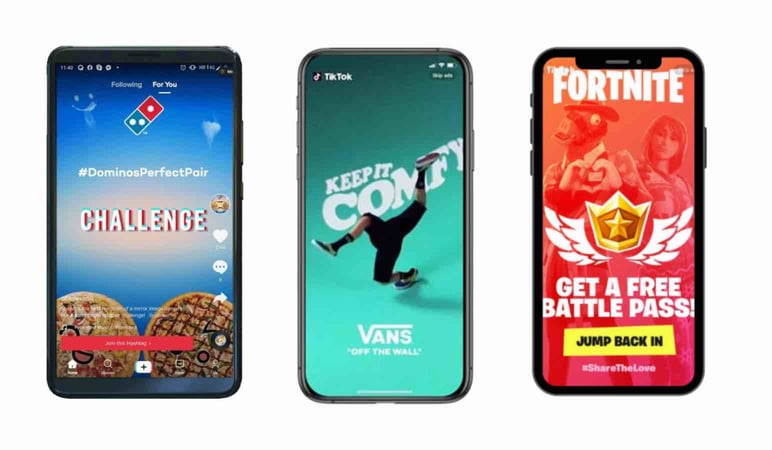
Brand takeovers are the most exclusive ads on TikTok. These are ads that take up the entire screen and are shown to the user as soon as he or she opens the app.
They are normally animations or videos, and they can include a link to an external website or present a Hashtag Challenge, which we will see in the next ad category.
We say that they are exclusive for two reasons: there can only be one brand takeover per category and country per day; thus, a brand gets exclusivity. For example, Sephora can hire a brand takeover for the makeup category in the United Kingdom for one full day.
This explains the high prices of brand takeovers on TikTok: to the tune of between 50,000 and 100,000 dollars.
Hashtag challenge
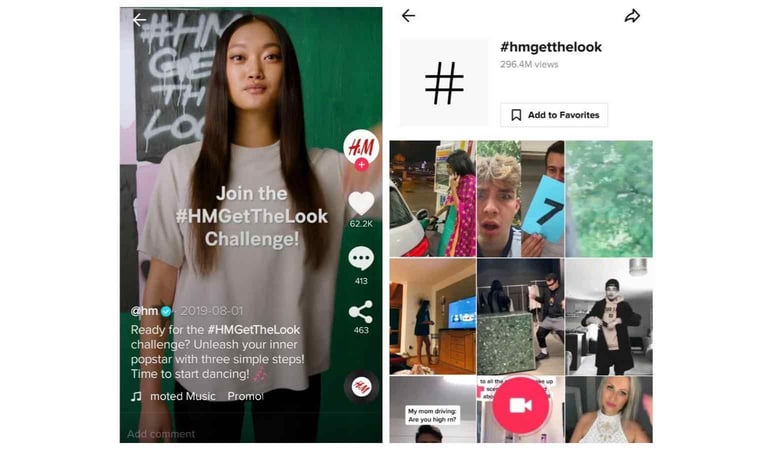
This is one of the formats that takes best advantage of user-generated content on TikTok. With a Hashtag Challenge, a brand proposes a hashtag for a category, inviting the TikTok community to make their own videos about the topic and to mark them with the hashtag. These hashtag sponsorships last between 3 and 6 days and appear in the Discovery tab.
It is a versatile marketing strategy because it takes advantage of user-generated content, generates attention for the brand, and if it reaches influencers, it can become more viral. According to TikTok, these ads get the best participation ratio, at 8.5%.
Again, the obstacle of a Hashtag Challenge is the price: around 150,000 dollars.
Branded lenses
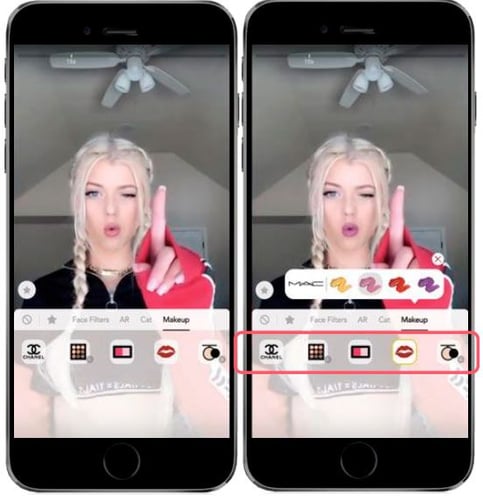
Luckily, there is another alternative that is more affordable for brands that don’t have millions to spare: creating augmented reality filters or “lenses” that users can use in their videos. This is the same approach as Snapchat filters, and they get brand positioning in a more indirect way than an ad.
→ Delve into the future: How to create augmented reality for products
Partner with TikTok influencers
Lastly, just like in Instagram, the TikTok community revolves around the phenomenon of influencers. In each category, there are star users who attract thousands of views and followers and who suddenly can be very attractive to brands. Without going into too much detail, brands like Walmart, Ralph Lauren, EA Sports, Target, and Doritos have already used this strategy.
Nevertheless, just like the rest of the content we mentioned, it is important for the strategy to be well planned and studied if you are going to partner with or sponsor an influencer. It should be someone who fits with your product category and who has an audience interested in buying what you offer. Researching niches and investing time in getting to know the TikTok community can lead you to the right results, which is better than trying to work with the most famous influencer if he or she is far from your objectives.
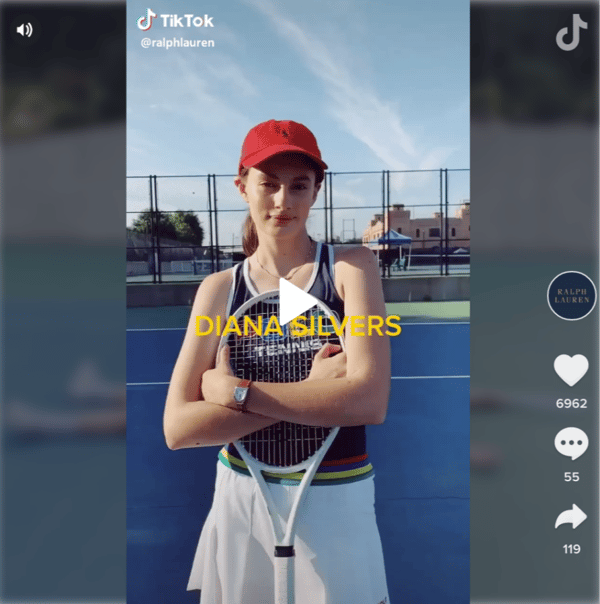
For example, if you sell bicycles, it would be better for you to find a TikTok creator who normally shares videos about repairing bicycles. The same is true for any other category: they key on TikTok is for the content where the product is appearing to be valuable and trustworthy.
And keep in mind that if you want to do a livestream with an influencer, this type of video can only be created by those over 16 years old.
Some sponsorship arrangements should be formalized through the app, but if you want to test the waters, the best approach is to introduce your brand and proposal to the influencer you are interested in working with directly via email.
→ Be influenced: A guide for partnering with influencers for marketing
Conclusion
Surely, the question that you still have whirling through your head is not, “Should I download TikTok?” but instead, “Should I advertise on TikTok?”
The answer depends on several factors:
- The demographic group of your potential audience.
- Your product category.
- The budget that you can afford for ad campaigns.
Depending on these variables, participating on TikTok may be a great marketing strategy or simply take away resources and time that you could have used for a better option. In addition, we must pay attention to news on TikTok’s entrance in to the ecommerce world and allowing brands to sell their products directly through the app, as is already possible with Instagram.
Before that big news tidbit makes headlines, prepare your product catalog with a PIM solution that you can try for free here: technology that, like TikTok, makes marketers do a dance when they see how easy it is to get quality content and send it to any sales platform.



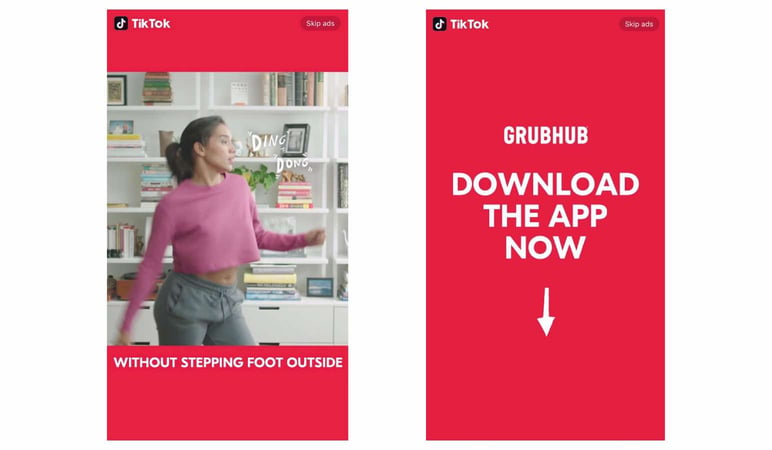
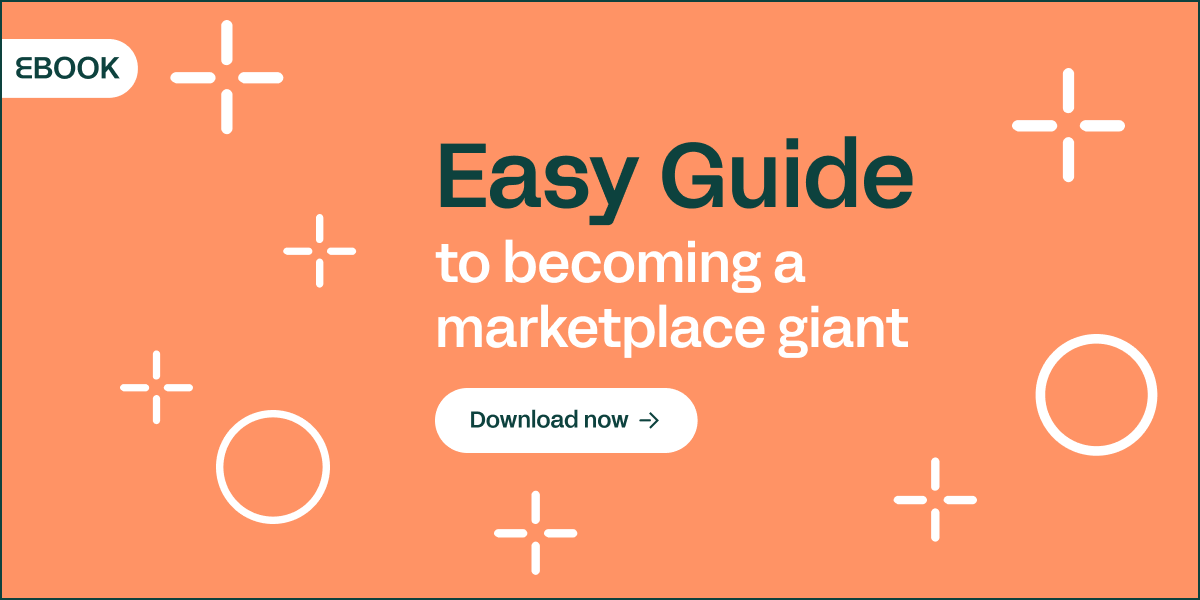
.png?width=520&name=Blog%20Partner%20(3).png)

.png?width=520&name=Blog%20Partner%20(1).png)


